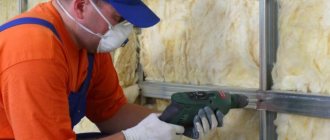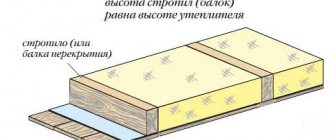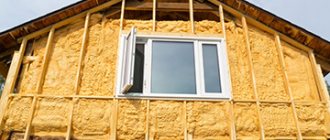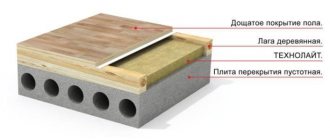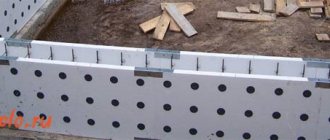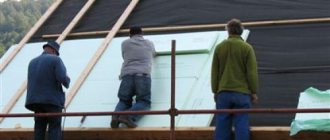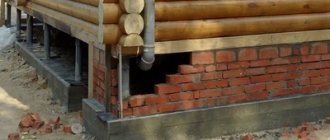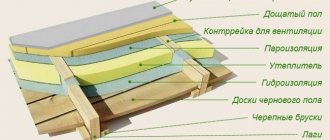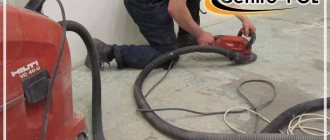Description of mineral wool properties
Mineral wool is a very multifunctional material, with a huge number of features. Mineral wool is made from molten rocks. Mineral wool is also extracted from metallurgical slags and their mixtures. Global manufacturers of mineral wool products often use rocks as raw materials.
When long-term and reliable operation of buildings and structures is required, the mineral wool that is obtained in high quality is used. Guaranteed use for a long time.
Benefits of mineral wool
- Low thermal conductivity, which makes it an excellent insulator in work.
- Fire safety is one of the most important factors in construction.
- Resistant to extreme temperatures, allows use in different regions.
- The material does not lose shape when heated and cooled to high temperature changes.
- High percentage of microchemical and microbiological resistance.
- Good vapor permeability, thanks to which the material “breathes”. This eliminates the possibility of fungus, which is one of the important aspects of construction quality.
- Easy installation.
Flaws
- Treatment with water-repellent agents is required to reduce moisture absorption. When moisture is absorbed, the thermal insulation is reduced and cold bridges appear.
- The weight is greater than polystyrene, which increases material costs.
Types of mineral wool
Basalt
They are made from gabbra, basalt, diabasalt with admixtures of rocks, limestone, and dolomite. Basalt wool has the lowest percentage of thermal conductivity; this building material is vibration-resistant and hydrophobic, and it is also fire-resistant.
Balsat wool can be of several types, both a pliable elastic material and a fairly durable one. As a result, we have a very wide range of uses for balsate wool. Because this fiber can be used to produce products with different strengths, densities and different types of coatings.
Slag
They are made from slag, which I call blast furnace slag; it is an accompanying material for metallurgical production. Slag wool has a minimal level of thermal conductivity. Effective insulation of facades with slag wool leads to the lowest indicator of its high hygroscopicity.
It is this building material of metallurgical production - blast furnace slag - that is the material for the production of slag wool. Let us mention another disadvantage of slag wool: its low vibration resistance, as well as its very high subacidity, that is, acidity.
It produces acidity, which exposes the metal to corrosion. It is for these reasons that slag wool is less used than other insulating materials, namely fibrous insulation.
Glass wool
Insulation with a characteristic yellowish tint and a fiber-like consistency. Glass, mineral, soda, shell rock, sand, and borax are used as materials for the production of glass wool.
It is this mineral wool that has minimal heat conductivity, very high vibration resistance, and excellent compressibility. Glass wool has the ability to reduce its dimensions several times by pressing. Thanks to this feature, it is transported in a compressed form and, in this regard, reduces delivery costs.
There are many varieties of cylinders, slabs, and mats made of fiberglass, especially a large number of glass wool products are products of soft consistency. Which are installed in places where large loads are not applied to thermal insulation, that is, they only have their own weight, which makes the task much easier.
Technology of wall insulation with mineral wool
First of all, you need to start by preparing the construction surface. Suppose you need to work with panels using mineral wool. To effectively heat walls with mineral wool, we recommend the following building materials: nails, umbrellas and glue specially designed for this work. Based on this, you can safely supply the surface with mineral wool.
Applying glue and installing insulation
Once you have prepared the surface, you can begin attaching the mineral wool boards. Professionals advise starting with the bottom, first row and be sure to take into account the horizontal installation. Because each next level must absolutely coincide and fit together, and also correspond to the previous one.
During installation, a mandatory condition is the use of a level. Before applying special glue, make sure you have a spatula with which you can do it smoothly and effectively.
After applying the glue with a spatula, you need to make an effort to press the mineral wool - this will be a 100% safe fastening. Then we make holes in the center and on the edges of the mineral wool, into which dowels and umbrellas are inserted.
Reinforcement
Often, this stage occurs in situations where there are layers with glue, which are not only a mineral wool closure, but also functionally cope with moisture protection. Then, to insulate the wall, another layer of glue is applied, in which the reinforced mesh is pressed into the reinforced mesh.
It is very important to accurately select a mesh that will be resistant to moisture and alkalis. Since the presence of many chemical elements in the top layer can contribute to the appearance of corrosion.
Facade finishing
The last step is the decorative design of the facade. The best solution is standard plaster, and its decorative varieties will only decorate the appearance of the building. If we compare the price for insulating the façade from the outside with mineral wool, it is low compared to other works.
It is very important to “get your teeth into”, that is, to have experience, since its absence can lead to unforeseen expenses not only for the purchase of materials, but also for inconsistencies in the correct installation work. Additional construction work, and further payment of heating bills due to incorrect installation.
Final wall decoration
Decorative plaster will not only decorate the facade of the building, but also protect the walls from mold and mildew .
Methods of applying decorative plaster:
- Trimming. This method involves using a rubber or natural sponge soaked in soapy water. After this, the surface texture becomes similar to natural stone.
- Bouffant. The plaster applied to the wall is, as it were, “combed” with a metal brush with wire bristles. After the plaster has dried, loosely attached particles are removed with a rag.
- Stamping. This is the easiest way to apply the material, using a roller covered with a mesh with a pattern.
How to insulate a house outside with mineral wool
Over the years, and after numerous cycles of changing temperature conditions, the outer wood covering has lost its original properties. This is due to the fact that a large number of large, deep cracks appear on wood material, namely logs or beams, under the influence of various atmospheric changes.
It follows from this that in most cases, mineral wool is chosen to insulate the facade of a wooden house, and vinyl siding is chosen for the decorative outer surface. Which is not very expensive in price and has a fairly long service life.
And yet, the finishing material is easy to install and, if one of the panels is damaged, it can be easily replaced with a new one. The technology of such insulation has advantages that make it particularly unique and individual:
• respect for the environment;
• fire resistance (it increases fire safety outside the house);
• the ability to perform any work regardless of atmospheric changes (strong tropical torrential rains are an exception; when choosing to work with cotton wool, the entire material will most likely become wet);
• ease of installation;
• materials (siding and mineral wool) have vapor permeability properties.
For full effect, the design must have at least one of four insulating layers: insulation; wet membrane; wind protection. All installation materials are mounted on a frame, a specially prepared metal or wooden profile. It is this installation that protects the wood from excess moisture and allows the walls to “breathe.”
Some useful tips
Experts in facade insulation when using mineral wool for thermal insulation recommend:
- Select the thickness of the insulation in accordance with climatic conditions. If it was not possible to find insulation boards of the required thickness, then the sheets can be installed in two layers. In this case, they should be placed apart, and not flush with each other.
- The pieces of mineral wool remaining after installation can be useful for sealing gaps and cracks formed on uneven walls of the building.
- When insulating a facade with mineral wool, acrylic plaster cannot be applied to the material. Acrylic that allows air and moisture to pass through reduces the service life of the building.
- For high-quality installation of the bottom plate, you should use a special metal cornice. It is mounted on the base of the building and secured with dowels.
- If the insulated reinforced wall is not very smooth, then it can be leveled using rough plastering.
The technology for insulating a facade with mineral wool is quite simple. Therefore, almost everyone can carry out such work with their own hands. High-quality and precise thermal insulation with mineral wool will protect the house from possible climatic “surprises” and make it warm and cozy.
- Author: Yaroslav Pershin
Rate this article:
- 5
- 4
- 3
- 2
- 1
(1 vote, average: 1 out of 5)
Share with your friends!
Insulation of brick houses from the outside
Whether you like it or not, you will have to heat a brick house. Experts unanimously recommend doing this at the construction stage, but people do not permanently live in buildings that they actually build. So, having lived through the cold winter, the problem has an advantage.
Currently, manufacturers offer a large number of thermal insulation materials on the market, each of which solves its own problem. Differing only in installation technology, labor costs and materials. You can choose any of the recommended thermal insulators.
- Cellulose insulation.
- Basalt slabs.
- Styrofoam.
- Polyurethane foam.
- Mineral wool.
There are two technologies that can be used to insulate a brick house: frame and multilayer. In the first case, we place insulation between the frame posts. We can pre-make the frame from an aluminum profile or wood and install the facing material on it.
In the second case, using a special adhesive mixture, we glue the insulation to the wall (we fix the additional heat insulator with plastic dowels). At the end we treat it with special mixtures for plaster.
Our above-mentioned mineral wool is very suitable for insulating houses. Namely, it is suitable for creating a ventilated facade. We attach the film to the sheathing, use a stapler to lay the material thickly over the walls, and fill the lumber sheathing with pre-treated antiseptic. To protect against moisture, we stuff thin slats for the air gap. Finally, we attach the siding to the slats.
Types of mineral wool
Mineral wool is divided into separate types, depending on the raw materials that were used in the production process:
- slag;
- fiberglass;
- rocks.
Many people are concerned about the question of what is better: basalt wool or mineral wool. In fact, the first is a subtype of mineral insulation. It is important to understand the difference between basalt and basalt wool. The difference is that the first is a rock, which is only one of the components of the thermal insulation material, and the second is the insulation itself.
A comparative table will help you to clearly see how basalt wool differs from mineral wool in properties and operation.
| Minvata | Basalt wool |
| The density of mineral wool is low, which affects the moisture absorption coefficient, therefore, to maintain the thermal insulation characteristics, it is necessary to additionally lay special membranes. | The difference between basalt wool in this aspect is significant. High density increases thermal insulation characteristics and also extends the service life of the insulation. |
| Due to the pliability of the material, it is easy to transport and quickly restores its original shape. | This insulation is produced in the form of slabs, so the conditions for its use are limited. |
| It is very easy to install, since the long, soft fibers do not break or fall off. | Basalt - inelastic, mineral wool can crumble during installation and cause irritation of mucous membranes. |
Before starting insulation work, you need to decide on the choice of insulation: choose basalt or mineral wool. When
choosing which is better: basalt or mineral wool, you must take into account the operating conditions, the required degree of thermal insulation, and the characteristics of the room to be insulated.
The best manufacturers
There are a large number of mineral wool manufacturers represented on the construction market. At the end of the year, the most popular brands were named:
- The leader is ROCKWOOL insulation. The manufacturer's products have a high level of thermal insulation and sound absorption. It is absolutely safe for humans, which makes it possible to use it even for insulation of public institutions. The high quality characteristics of the material made it preferred, which influenced the cost. According to experts, the technical characteristics of Light Butts from Rockwool rightfully allow it to be called one of the best.
- TechnoNIKOL is a leading manufacturer of inexpensive mineral wool. It is very convenient to install, but if installation rules are not followed, the sheets may break. Basalt wool from the manufacturer has excellent vapor permeability.
- The ISOVER brand is also known in the building materials market. The manufacturer offers stone and glass wool, which are environmentally friendly and safe. The insulation properties of the materials are excellent, and the price is quite reasonable.
Thermal insulation basalt wool Rockwool Light Butts Scandic
Also, experts highlight such manufacturers as PAROC, KNAUF, URSA. Products from these brands are often used to insulate log houses and other buildings. The listed heat insulators retain heat well and are easy to install. These are quite expensive materials, but their price is consistent with the quality.
Experts highlight the Beltep brand among mineral wool for facades in the mid-price category. Fire safety, excellent level of vapor permeability, good rigidity and ease of installation, combined with an affordable price, have made the Belarusian manufacturer very popular.
Insulation of the facade with mineral wool under plaster
This method of insulation must be carried out in dry weather so that the heat does not get on the material. Because this can cause all the material to slide off. As always, at the initial stages we thoroughly clean and inspect the facade to remove dirt, dust and other things.
Be sure to level the surface and apply a primer with deep penetrating ability. We glue the slabs using a special adhesive composition, which we pre-mix with a construction mixer. Carefully coat all the material with glue and apply it to the facade surface.
We glue all the plates exactly in a row, without creating cracks or holes. After we have insulated the walls from the outside, our next step is to reinforce the tops of the corners and openings. After everything has dried (at least 24 hours), we proceed to the last step - finishing the walls with 3-5 mm plaster.
Main types of insulation installation
To insulate a building, it is better to opt for external installation of mineral wool. Experts recommend this method as the most effective. One of the common methods is to install slabs with the creation of a ventilated gap. This method has been described below.
There are also other ways to insulate walls from the outside:
- Wet.
- “Well” type.
The wet method consists in the fact that after installing the mineral wool, a reinforcing mesh with plaster is applied to it. After this, the facade of the building is painted. More details about the wet insulation method can be found in the video. In the video you can more clearly see the correct installation of sheets, which will help you complete this process without outside help.
Installation of mineral wool according to the “Well” type is carried out using the following technology: the insulation is mounted between the double wall of the building. To do this, sheets of material are mounted to a brick wall, and then a cladding is made of concrete, brick or other materials. Thus, the insulation is contained in the gap between the double wall of the building.
Roof insulation
Mineral wool is not far behind in its relevance and convenience and in roof insulation. It is environmentally friendly, made of non-flammable material, soundproof. To prevent moisture from accumulating in it, an insulating film is included in the composition.
The main mistakes in roof insulation.
- The chosen size of the canvas is not correct; it is better to take a margin of 10-50 mm more than the measured one, so as not to allow cold to pass through the gaps.
- The terms chosen are not correct; it is advisable to discard materials whose shelf life is less than 10 years.
- Do not forget that you need to use a material of low rigidity to avoid cold bridges.
